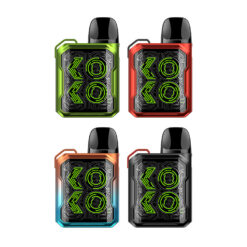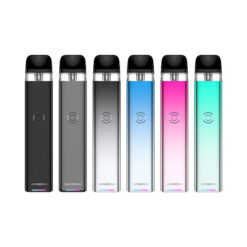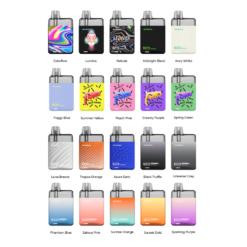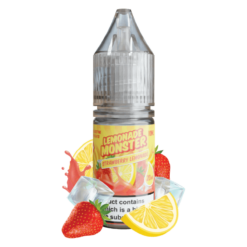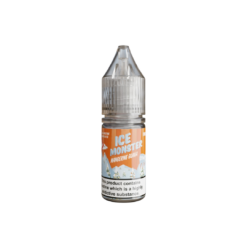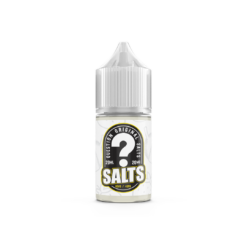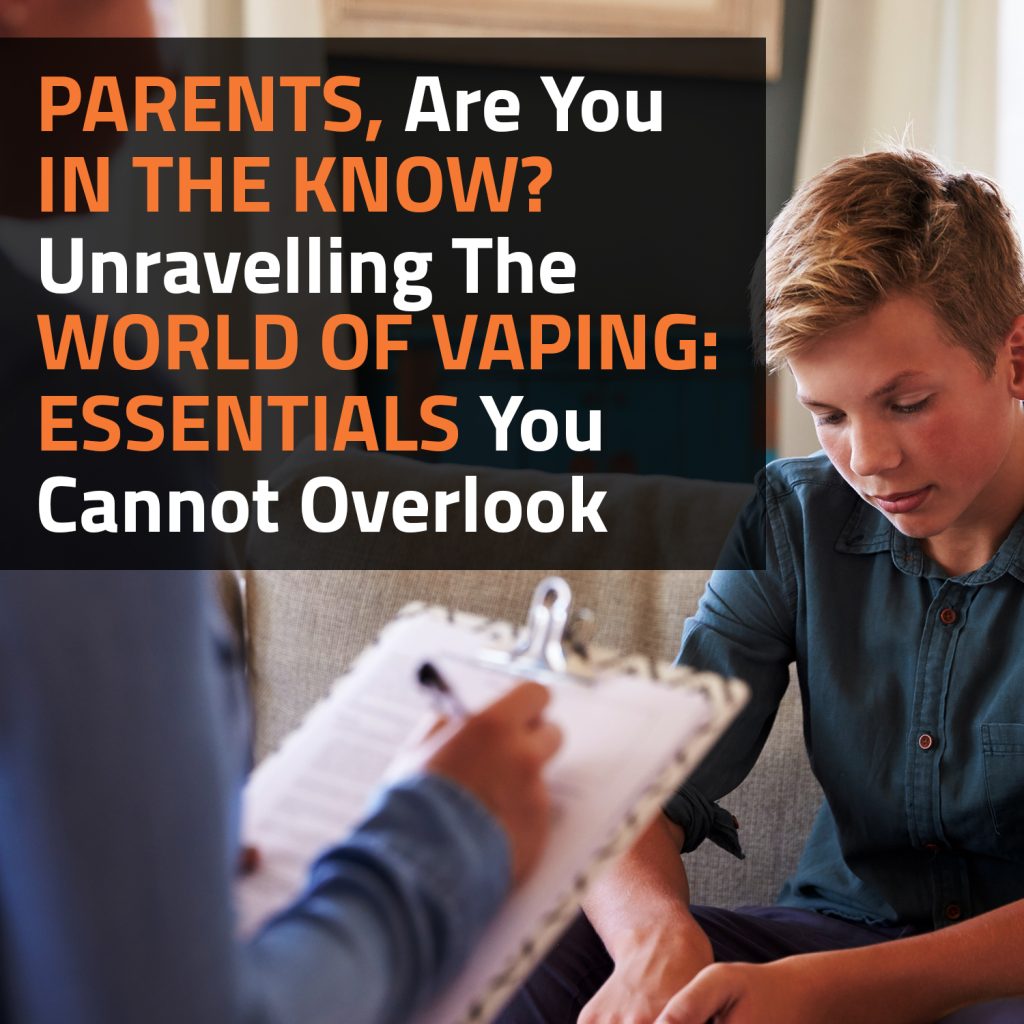In today’s fast-paced digital age, trends emerge rapidly and influence the choices of our youth. Among these, vaping stands out as a phenomenon that has gained immense popularity in recent years.
Yet, many questions surround its safety, influence, and societal implications. For parents and guardians aiming to navigate this new terrain, understanding the essentials of vaping is necessary. This article delves deep into the topic, providing a comprehensive guide on everything you need to know about vaping and its impact on teenagers.
What Is Vaping And Why Is It So Popular Among Teenagers?
Vaping has become a significant trend in recent years, especially among teenagers. It refers to the act of inhaling and exhaling the aerosol, commonly known as vapour, which is produced by an electronic device called an e-cigarette or vape. This vapour often contains nicotine, which is derived from tobacco, as well as flavourings and other chemicals.
How Does A Vape Or E-Cigarette Work?
At its core, an e-cigarette is a simple device that turns a liquid solution, often known as e-liquid or vape juice, into an inhalable aerosol. It accomplishes this through a process of heating and vaporisation.
A typical vape or e-cigarette comprises several fundamental parts. These include the:
- Battery – Provides the power supply
- Atomiser – Where the heating process occurs
- Tank – Holds e-liquid
- Mouthpiece – Piece through which the user can inhale vapour
When the device is activated, either by pressing a button or simply inhaling, the battery heats the atomiser. This, in turn, heats the e-liquid in the tank to a point where it becomes a vapour. This vapour can then be inhaled by the user.
Are All Vapes The Same In Design And Function?
No, vapes come in a variety of designs and functionalities. From simple “pen” devices to complex “mod” systems, the design can vary depending on the user’s preference and experience level. However, the basic principle of turning e-liquid into vapour remains consistent across different models.
-
UWELL Caliburn GK2 Kit
R495.00Original price was: R495.00.R247.50Current price is: R247.50. -
Vaporesso XROS 3 Kit
R540.00Original price was: R540.00.R380.00Current price is: R380.00. -
Vaporesso ECO NANO Kit
R235.00 – R295.00 -
Smok Nord 50W Kit
R550.00Original price was: R550.00.R410.00Current price is: R410.00.
Why Do Teenagers Find Vaping Appealing?
The appeal of vaping to teenagers can be attributed to several factors, from curiosity and peer influence to marketing and the plethora of available flavours.
Many e-cigarette companies use marketing techniques that seem to resonate with a younger audience. Bright colours, youthful models, and attractive flavour names play a significant role in attracting teenagers. Some advertisements even draw parallels between vaping and popular youth activities, creating an image that vaping is trendy and suitable for young people.
Teenagers may often find themselves in situations where they want to fit in or be part of the “cool” group. If that group is vaping, the pressure to join in can be intense. This desire to conform and be accepted by peers can drive teenagers to experiment with vaping, even if they have no prior inclination to do so.
What Are The Potential Health Impacts Of Vaping?
When discussing vaping essentials, it is crucial to delve deep into its health implications. While vaping is a safer alternative to smoking, vaping carries its own set of potential risks and consequences.
Is Vaping Really Safer Than Traditional Smoking?
Vaping seems like a clean and streamlined version of smoking, primarily because it eliminates the harmful tar and many carcinogens found in traditional cigarettes. However, this does not mean vaping is completely devoid of health concerns.
What Are The Key Differences In Health Risks Between Vaping And Smoking?
- Toxicity: Traditional cigarettes contain thousands of chemicals, many of which are toxic and known carcinogens. Vaping reduces this number, but the vapour may still contain substances such as:
- Formaldehyde
- Acetaldehyde
- Acrolein
- Nicotine: Both cigarettes and e-cigarettes deliver nicotine, a highly addictive substance. However, the concentration might differ, and some e-liquids allow users to adjust the nicotine level.
- Respiratory Concerns: While smoking is linked to lung cancer and chronic bronchitis, vaping has been associated with conditions like e-cigarette or vaping product use-associated lung injury (EVALI).
How Do The Ingredients In Vape Juice Compare To Tobacco?
Vape juice primarily contains propylene glycol, vegetable glycerin, flavourings, and nicotine. Comparatively, tobacco in cigarettes comes with tar, nicotine, carbon monoxide, and a host of other harmful chemicals. However, it’s essential to note:
- Not all e-liquids contain nicotine
- Certain flavourings in e-liquids are not always safe for inhalation, even if they are safe for consumption
- The lack of combustion in vaping reduces the presence of many harmful chemicals found in tobacco smoke
Are There Long-Term Effects Of Vaping That Are Still Unknown?
The long-term effects of vaping remain a subject of ongoing research. Since vaping is a relatively new phenomenon, we do not have the breadth of data available as with traditional smoking.
Several studies have been undertaken to understand the impact of vaping on health. Most notably:
- EVALI Outbreak Study: This investigated the sudden rise in lung injuries associated with vaping in 2019.
- Cardiovascular Research: Some studies indicate a potential impact of vaping on heart health, although results are still inconclusive.
- Oral Health Studies: Preliminary research suggests vaping might affect oral health, leading to conditions like gum inflammation.
While the definitive impact of vaping on lung health is still under investigation, early indications show:
- An increased risk of developing respiratory issues.
- Potential aggravation of asthma and other pre-existing lung conditions.
- The risk of EVALI, although it’s largely linked to vaping THC-containing products.
How Is The Law Regulating Vaping For Teenagers?
Governments worldwide have recognised the rising trend of vaping among teenagers and have taken measures to regulate its use.
What Is The Legal Age For Purchasing Vaping Products?
In many countries, the legal age mirrors that of traditional tobacco products. However, this age can vary:
- United Kingdom: 18 years
- Australia: 18 years in most territories
- United States: 21 years
- Canada: Varies by province, ranging from 18 to 21 years
What Are The Penalties For Underage Purchasing?
In many countries, both the sale to and purchase by underage individuals can result in fines. Moreover:
- Vendors may lose their licence for repeated offences.
- Some jurisdictions may require mandatory age verification checks for online sales.
Are There Restrictions On Vape Advertising In South Africa?
Advertising restrictions for vaping products are not as stringent as for traditional tobacco products, but there are movements towards greater regulation.
In South Africa, as in many parts of the world, vibrant packaging, enticing flavour names, and advertising campaigns can make vaping products attractive to a younger audience. While local regulations might not be as restrictive, the impact of global online marketing also plays a role, with many teens exposed to international advertising campaigns via social media platforms.
Moreover, the South African government is actively discussing the Control of Tobacco and Electronic Delivery Systems Bill, which might see e-cigarettes being treated similarly to traditional tobacco products. If passed:
- Advertising, promotion, and sponsorship of vaping products would be prohibited.
- Vape products would not be visible at points of sale.
- Packaging would have warning labels similar to those on tobacco products.
How Can Parents Address And Prevent Vaping Among Their Children In South Africa?
Awareness and open conversation are key when it comes to guiding the youth.
Detecting vaping can be a bit more challenging than traditional smoking due to the lack of a distinct tobacco smell. However, there are signs:
- Scented aroma, often sweet, lingering on clothes or in the room.
- Finding unfamiliar USB-like devices, cartridges, or e-liquid bottles.
- Increased thirst or nose bleeds (due to the dehydration effects of vaping).
How Can South African Parents Initiate An Open Conversation About Vaping?
Starting a conversation about vaping requires tact and understanding:
- Educate Yourself First: Understand the basics of vaping and be prepared to answer questions or address misconceptions.
- Choose the Right Time: Look for relaxed moments where you and your child can chat without distractions.
- Listen Actively: Be more of a listener than a lecturer. Understand their perspective and provide guidance without being confrontational.
How Can Parents Provide Accurate Information To Dispel Myths?
It’s important to rely on trusted sources for information. Parents can:
- Refer to the Department of Health’s guidelines and publications on vaping.
- Attend community workshops or sessions focused on teen vaping awareness.
- Share real stories and news articles that highlight the potential dangers.
Are There Any Nicotine-Free Alternatives To Vaping In South Africa?
Nicotine-free e-liquids: Available at many vaping shops, they offer the sensation of vaping without the addictive substance. Here are some of our nicotine-free e-liquids:
- Boss E-Liquids – Raspberry Crumble
- Straight Up – Apple *6
- Iced T Mixed Berry
- Brutal Black Currant
- Amplified Strawberry Almond Milkshake
- Spook (New) Freaky Fruit
How Does South African Culture And Society View Vaping Among Teenagers?
Societal and cultural perspectives can play a significant role in how behaviours, such as vaping, are perceived and addressed.
Recent surveys indicate a rise in vaping, especially among urban teenagers in South Africa. The allure of trendy vape shops, coupled with international influences, plays a part in this surge. Other influences include:
- Cultural Influence: International music, movies, and online influencers who promote vaping indirectly contribute to its appeal.
- Social Circles: Peer pressure and the desire to fit into certain groups can drive teens towards vaping.
- Curiosity: The vast array of flavours and customisable devices cater to the adventurous and curious nature of teenagers.
How Do Schools And Educational Institutions In South Africa Address Vaping?
Most educational institutions in South Africa are increasingly becoming aware of the vaping trend. There are also some programs in place to curb underage vaping, such as:
- Awareness Workshops: Schools often organise sessions where experts talk about the potential risks associated with vaping.
- Policy Implementation: Many schools have strict no-vaping policies in place, similar to the rules against traditional smoking.
- Peer Counselling: Older students are trained to guide and counsel younger peers on the dangers of vaping.
What Role Do South African Celebrities And Influencers Play In The Perception Of Vaping?
Influencers and celebrities have a profound impact on shaping opinions, especially among the youth. While some celebrities and influencers might be seen vaping or endorsing certain products, it’s essential to distinguish between paid promotions and personal choices. Equally, many South African figures actively speak out against vaping, particularly when addressing their younger fans.
How Can Positive Role Models Influence Teenagers’ Choices?
- Public Awareness Campaigns: Celebrities can leverage their popularity to spread awareness about the adverse effects of vaping.
- Personal Stories: Sharing personal experiences, whether they are struggles with addiction or choices to avoid vaping, can resonate deeply with fans.
- Support Initiatives: By backing or starting initiatives that aim to educate and help those affected by vaping, influential figures can make a tangible difference.
The Future Of Vaping In South Africa: What Does It Look Like?
Given the evolving nature of regulations, societal attitudes, and health findings, the vaping landscape in South Africa may witness significant changes in the coming years.
The South African government, recognising the implications of vaping, especially among teenagers, might tighten regulations further. This may include:
- Stricter Age Verification: Enhanced methods, especially for online sales, to ensure only those of legal age can purchase vaping products.
- Flavour Restrictions: Certain enticing flavours might face bans, given their appeal to younger users.
- Taxation: Similar to tobacco products, vapes and e-liquids might face higher taxation, aimed at reducing consumption.
How Can South African Communities Work Towards A Healthier Future For Teens?
Engaged communities can play a pivotal role in shaping a healthier future through the use of:
- Local Support Groups: Spaces where teenagers can discuss their experiences, challenges, and seek advice about vaping.
- Collaborative Efforts: Communities, schools, and local health departments working hand-in-hand to devise strategies against teen vaping.
- Public Awareness Campaigns: Community-driven events highlighting the potential dangers of vaping, supported by real-life testimonials.
Understanding the complexities and implications of vaping, especially among teenagers, is crucial for parents and guardians worldwide. Through education, open dialogue, and community collaboration, it’s possible to guide our youth towards making informed decisions about their health and well-being. As the landscape of vaping continues to evolve, so too must our strategies in addressing its challenges and potential risks.


